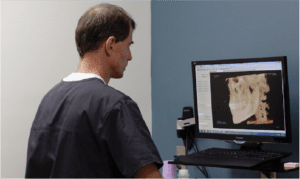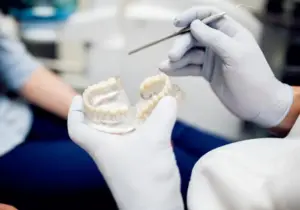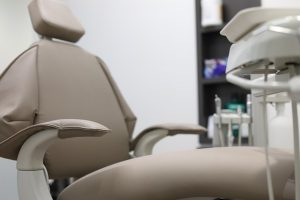Most of permanent teeth are good for life, but sometimes a tooth needs to be pulled. There are actually quite a few reasons an adult might need a tooth or two removed:
- Tooth decay may lead to a cavity large enough that the tooth cannot be saved.
- If facial trauma that involves a major break in the tooth, it may not be able to be repaired.
- When your mouth is too crowded, teeth may need to be extracted before orthodontia. And if a tooth does not have room to come in – like eye teeth or wisdom teeth – it may need pulled.
- Infection is another common reason for tooth extraction.
- If decay involves nerves and blood vessels, and antibiotics or a root canal do not solve the problem, the tooth may need to come out to stop the spread of infection.
- When immune systems are compromised, such as when you are having chemotherapy or getting a new organ from a donor, we sometimes pull teeth at high infection risk preventively.
- When gum disease has caused teeth to loosen, you may need to have them removed.
What Happens During Tooth Extraction
The process of removing a tooth, most often, is fairly simple. When you need a tooth extracted, you will first get a numbing injection. For complicated cases, sometimes we use a general anesthetic. Our office also offers patients sedation options for procedures like tooth extractions, because sometimes we all need a bit of help to stay calm and comfortable.
For impacted teeth, the oral surgeon must first remove gum and / or bone over the tooth and then, with forceps, gently rock the tooth to get it loose. Occasionally, a recalcitrant tooth must be taken out piece by piece. This is a more invasive process, and we may apply a graft to the jaw in that area afterward to ensure proper healing and preserve bone integrity.
When the tooth is out, a clot of blood forms. Gauze will be placed in the hole, which you will lightly bite on to make the bleeding stop. Self-dissolving stitches may be needed. Rarely, a condition develops called dry socket, where the blood clot breaks loose. In this case, dressing filled with sedative will be placed in the socket to reduce discomfort until a new clot is formed.
Recovering from a Tooth Extraction
After the procedure, you will recover at home for a few days. We will send instructions with you to minimize discomfort, lower infection risk, and hasten recovery. You will be asked to:
- Take the medications you have been given for pain.
- Change gauze pads in 3-4 hours, or sooner, if they become blood-soaked.
- Hold an ice pack against your jaw for 10 minutes to keep down swelling. Repeat every 20 minutes.
- Take it easy for at least a day, and reduce activity for a few days.
- Avoid rinsing, spitting forcefully, and drinking from a straw for one day.
- Rinse with a mixture of salt and warm water after 24 hours.
- Avoid smoking.
- Eat foods (like soup or applesauce) for 24 hours. Slowly add easy-to-chew foods like cottage cheese, baked potatoes and eggs; then move onto regular foods.
- When lying down, elevate your head with pillows.
- Keep brushing and flossing your teeth, but avoid the empty tooth socket.
What’s most important to remember as the site of your tooth extraction heals, is that keeping that clot in place is all-important to safe, proper healing. Being gentle, aware, and keeping the area clean are integral to helping the gums close. So, another measure to take is to avoid extreme high or low-temperate foods for a while.
Most patients feel some pain as the numbing agent wears off, which is what the pain meds are for. Most often, our patients can get comfortable with the help of OTC painkillers. However, if you have trouble, we include a short, low amount of prescription pain killers for your recovery.
For 24 hours, you may have some swelling and residual bleeding. If either bleeding or pain is strong more than four hours after the extraction, call our office. Also call if you have any fever or chills, vomiting, redness, swelling or extreme discharge from the extraction site, coughing, shortness of breath, or chest pain. These symptoms are signs something urgent is wrong. Keep in mind, though, that these complications aren’t common – especially if you’re on top of your aftercare.
The preliminary healing period is about 1-2 weeks, as bone and gum grow into the gap. A missing tooth may cause other teeth to move, changing your bite. That’s why we often recommend replacing the empty space with a dental implant.
Avoiding Risks While Recovering from a Tooth Removal
While having a tooth pulled is usually complication-free, there are risks, as with any medical procedure. Harmful bacteria can enter the bloodstream. Gum tissue can also become infected. People at high risk, such as those with heart defects and impaired immune systems need to take antibiotics before and after having a tooth pulled.
Before extracting a tooth, we will take your complete medical history, including the medications and supplements you use, to reduce the risk of problems. Skilled extraction, thorough care, and best practices for at-home recovery will make healing more comfortable, simpler and streamlined.










